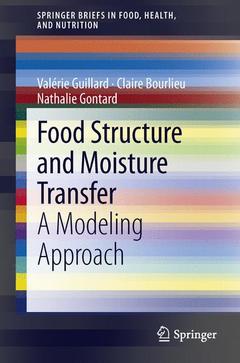Description
Food Structure and Moisture Transfer, 2013
A Modeling Approach
SpringerBriefs in Food, Health, and Nutrition Series
Authors: Guillard Valérie, Bourlieu Claire, Gontard Nathalie
Language: English
Subjects for Food Structure and Moisture Transfer:
Prix indicatif 52,74 €
Disponible chez l'éditeur (délai d'approvisionnement : 15 jours).
Add to cart
Publication date: 02-2013
60 p. · 15.5x23.5 cm · Broché
60 p. · 15.5x23.5 cm · Broché
Résumé
/li>Sommaire
/li>Commentaire
/li>
It's well known that the structural characteristics of food materials influence their mass transfer, especially their water transfer properties during such processes as drying, hydration, and storage. In porous cereal-based products, for example, effective water diffusivity is highly affected by the volume fraction and distribution of both solid and gas phases, while in dense food materials, such as fat-based or other edible coatings, it depends on factors that affect the "tightness" of the molecular structure (e.g., free volume, cohesive energy density, crystallinity). This Brief will review the impact of food structure on moisture transfer. A multi-scale analysis of food structure will include a look at molecular structure (e.g., free volume, crystallinity), nanostructure, microstructure (e.g., porous food), and macrostructure (e.g., bilayer structure). For each structural analysis, a focus on the mathematical modelling of the relationship between structural properties and moisture transfer properties will be performed. ?
Theoretical Background.- Relationship Between Multi-scale Food Structure and Moisture Transfer Properties.- Integration of the Various Scales: Examples of Hydrophobic Dense Edible Coatings.- Concluding Remarks.- References.
Includes supplementary material: sn.pub/extras
© 2024 LAVOISIER S.A.S.

